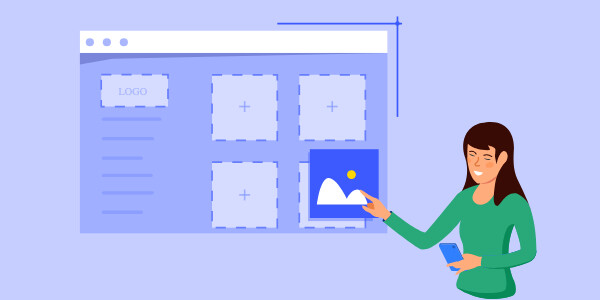
Elevating Your Brand: How UI/UX Design Agencies Drive Innovation and Growth
In today’s digital landscape, where user experience reigns supreme, leveraging the expertise of user interface (UI) and user experience (UX) design agencies has become indispensable for businesses striving to stand out and succeed. These agencies offer a myriad of benefits.
Let’s delve into the advantages they bring, the diverse services they offer, and real-world examples showcasing how UX design and UI design propel business growth.
Unveiling the power of UI/UX design agencies
Numerous worthy UI/UX design agencies are out there, each offering its unique blend of creativity, innovation, and expertise. One such standout is Uitop. You can visit site to discover what they bring to the table.
For those seeking a top-notch UI/UX design agency, consider the following advantages.
1. Strategic user research
UI/UX design agencies conduct thorough user experience research, utilizing techniques such as surveys, interviews, and usability testing to gain valuable insights into user behaviors, preferences, and pain points. By understanding the target audience more deeply, they can tailor the UI design strategy to meet specific user needs and expectations.
2. Iterative design process
Employing an iterative user experience design process, these agencies continuously refine and enhance the user experience based on feedback and data analysis. Through rapid prototyping and user testing, they identify areas for improvement and implement changes iteratively, ensuring that the final product meets the highest standards of usability and satisfaction.
3. Cross-platform compatibility
With the proliferation of devices and screen sizes, ensuring cross-platform compatibility is crucial for reaching a diverse audience. UI design agencies excel in creating responsive designs that adapt seamlessly to different devices and resolutions, providing a consistent user experience across desktops, tablets, and smartphones.
4. Collaborative approach
UI/UX design agencies foster a collaborative environment, working closely with clients to understand their vision, goals, and brand identity. By involving stakeholders throughout the design process, they ensure alignment and transparency, resulting in a final product that not only meets but exceeds expectations.
5. Focus on accessibility
Accessibility is a fundamental aspect of modern design, ensuring that everyone can access and interact with digital products regardless of ability. UX design agencies prioritize accessibility standards and guidelines, implementing features such as alternative text for images, keyboard navigation, and high-contrast interfaces to make the user experience inclusive and equitable.
6. Data-driven design decisions
Leveraging analytics and user feedback, UI/UX design agencies make data-driven design decisions to optimize the user experience. By tracking user behavior, engagement metrics, and conversion rates, they gain valuable insights into how users interact with the product, allowing them to fine-tune the design for maximum effectiveness.
7. Continuous support and maintenance
Beyond the initial design phase, UI design agencies provide ongoing support and maintenance to ensure the product’s long-term success. Whether addressing technical issues, implementing updates, or scaling the design to accommodate growth, they remain committed to delivering exceptional user experiences throughout the product lifecycle.
Exploring UI/UX design services
Exploring UI/UX design services is smart, whether you’re looking to improve an existing product or develop a new one. Here’s a breakdown of what you might consider.
1. Define your needs
Understand what exactly you need from UI/UX design services. Are you looking for a complete redesign, user testing, or just some improvements? Clarifying your goals will help you find the right fit.
2. Budget
Determine your budget for UI/UX design services. Prices can vary widely depending on the scope of work, the designers’ experience, and the agency’s location.
3. Communication
Clear communication is critical to a successful UI/UX design project. Ensure the designers understand your vision, target audience, and business objectives.
4. Experience
Look for designers with experience in your industry or with similar types of projects. They’ll have a better understanding of your users and design requirements.
5. Technology
Ensure the designers are proficient in the latest UI/UX design tools and technologies. This includes software like Sketch, Adobe XD, and Figma or prototyping tools like InVision or Marvel.
Realizing business growth through UX/UI design
The impact of UX/UI design on business growth cannot be overstated. Businesses can unlock many benefits by prioritizing user satisfaction and streamlining interactions, including increased conversions, higher customer retention rates, and enhanced brand loyalty. Let’s explore some real-world examples.
1. Airbnb
Airbnb revolutionized the hospitality industry by focusing on the user experience. Their platform’s intuitive design allows users to easily search for accommodations, view detailed listings, and book their stay seamlessly. The user-friendly interface and features like reviews, filters, and instant booking options significantly enhanced user satisfaction.
2. Netflix
Netflix is another prime example of a company that leveraged UX/UI design to fuel its business growth. From personalized recommendations to a seamless content browsing experience, Netflix prioritizes user-centric design across its platform.
The intuitive interface anticipates users’ preferences, making it effortless for subscribers to discover and enjoy content tailored to their tastes. Features like autoplay, easy navigation, and cross-device synchronization enhance user engagement and retention.
Conclusion
UI/UX design agencies are critical to business success in today’s digital world. They not only provide the product’s aesthetic appearance but also define the user experience, which directly affects conversion, customer retention, and brand loyalty.
However, success depends not only on the design but also on the ability to innovate, analyze data, and collaborate effectively with designers. By combining these aspects, companies can achieve high growth rates and successfully compete in today’s market environment.

